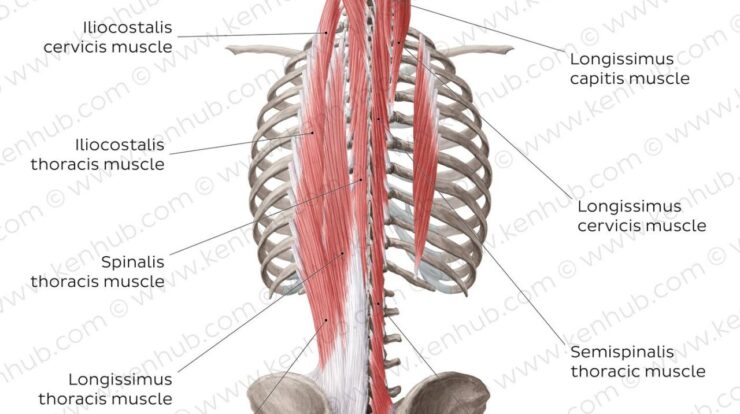
How to handle his snake yumi sin and fit kitty – Understanding the behavior of snakes and cats is crucial when it comes to handling them safely. This comprehensive guide delves into the intricacies of their natural instincts, potential risks, and essential safety precautions to ensure a harmonious coexistence between these fascinating creatures.
From feeding and care to socialization and training, we explore every aspect of responsible snake and cat ownership. Discover the ideal enclosure setup for snakes, considering temperature, humidity, and enrichment. Learn how to socialize snakes and cats, emphasizing positive reinforcement and patience.
Introduction: How To Handle His Snake Yumi Sin And Fit Kitty
Handling snakes and cats requires understanding their unique behaviors and needs. This guide provides comprehensive instructions on how to safely and effectively handle these animals, ensuring their well-being and your own safety.
Understanding Snake Behavior
Snakes are non-venomous reptiles with varying temperaments and defensive mechanisms. Understanding their body language and behaviors is crucial for safe handling. When threatened, they may strike, bite, or release musk.
Preparing for Snake Handling
Before handling a snake, ensure a calm and controlled environment. Wash your hands thoroughly and avoid wearing loose clothing or jewelry that could entangle the snake. Use a snake hook or tongs for larger snakes, and always support the snake’s body to prevent injury.
For those interested in connecting with the Middle Eastern community in Los Angeles, Los Angeles Mecconline is a valuable resource. This online platform provides a comprehensive directory of Middle Eastern businesses, organizations, and events, making it easy for individuals to find the services and support they need.
Snake Handling Techniques
Approach the snake slowly and calmly, allowing it to adjust to your presence. Support the snake’s body firmly, using your hands or a snake hook, and avoid making sudden movements. Handle the snake for short periods, and return it to its enclosure when it shows signs of stress or discomfort.
Cat Behavior and Handling
Cats are curious and playful animals, but they can also be unpredictable. Understanding their body language and respecting their boundaries is essential for safe handling.
Preparing for Cat Handling
Before handling a cat, ensure a calm and comfortable environment. Approach the cat slowly and allow it to approach you first. Avoid making sudden movements or loud noises, and always respect the cat’s personal space.
Cat Handling Techniques
Scoop the cat up gently from underneath, supporting its chest and hindquarters. Avoid squeezing or holding the cat too tightly, and always allow it to escape if it shows signs of distress. Handle the cat for short periods, and provide it with treats or praise to reinforce positive behavior.
Understanding Snake Behavior
Snakes, captivating creatures of the reptile world, exhibit a fascinating array of instincts and behaviors. Understanding these characteristics is crucial for safe and responsible handling, minimizing potential risks and dangers.
Snakes are primarily driven by survival instincts, including seeking food, shelter, and mates. They possess remarkable sensory capabilities, utilizing their forked tongues to detect chemical cues in the environment and heat-sensing pits to locate warm-blooded prey. Their flexible bodies allow for agile movement, enabling them to navigate complex terrains and constrict prey.
Natural Instincts
Snakes instinctively avoid confrontations, preferring to flee from perceived threats. However, when cornered or threatened, they may exhibit defensive behaviors such as hissing, striking, or releasing foul-smelling musk. It is important to respect their natural instincts and handle them with care, avoiding sudden movements or startling them.
Potential Dangers
While not all snakes are venomous, it is crucial to be aware of the potential dangers associated with handling them. Venomous snakes possess specialized fangs that inject toxic substances into their victims. Bites from venomous snakes can cause severe pain, tissue damage, and even life-threatening conditions.
It is essential to identify the species of snake and seek immediate medical attention if bitten.
Non-venomous snakes, while not posing the same level of danger, can still inflict painful bites. Their sharp teeth can cause puncture wounds and lacerations. Additionally, some snakes carry bacteria in their mouths that can lead to infections if not treated promptly.
Safety Precautions
When handling snakes, safety should be the utmost priority. Understanding the animal’s behavior is crucial, but implementing proper safety measures is equally important to prevent any harm to both the handler and the snake.
Essential Safety Measures
- Wear appropriate clothing:Long pants, closed-toe shoes, and gloves provide protection from bites or scratches.
- Use a snake hook or tongs:These tools allow for a safe distance between the handler and the snake.
- Handle in a secure location:Choose a confined space where the snake cannot escape or get injured.
- Supervise children:Children should never handle snakes without adult supervision.
- Know the snake’s species:Identify the snake to understand its potential danger and appropriate handling techniques.
Proper Handling Techniques
When handling a snake, it’s essential to minimize stress and potential harm to the animal. Follow these techniques:
- Support the body:Use your entire hand to support the snake’s body, avoiding putting pressure on the head or tail.
- Keep a firm but gentle grip:Hold the snake firmly enough to prevent it from escaping, but avoid squeezing too tightly.
- Move slowly and calmly:Sudden movements can startle the snake and cause it to react defensively.
- Avoid handling during feeding:Snakes are more likely to be defensive when they are hungry.
- Wash hands after handling:This helps prevent the spread of bacteria between the snake and the handler.
Feeding and Care
Maintaining a snake’s health and well-being requires proper feeding and care practices. Understanding their dietary requirements and following appropriate feeding guidelines are crucial for their survival and optimal growth.
Dietary Requirements
Snakes are carnivorous and their diets primarily consist of live prey. The specific prey items vary depending on the snake species, with some feeding on rodents, birds, fish, or even other snakes.
- Rodents:The most common prey for pet snakes are rodents such as mice, rats, and hamsters.
- Birds:Some snakes, such as the king cobra, feed primarily on birds.
- Fish:Water snakes and certain species of pythons are piscivorous, meaning they eat fish.
- Other Snakes:Some snakes, like the king cobra, are known to prey on other snakes.
Feeding Practices
Feeding practices should be tailored to the specific snake species and their individual needs. Here are some general guidelines:
- Frequency:The frequency of feeding depends on the snake’s age, size, and species. Young snakes typically need to be fed more often than adults.
- Prey Size:The prey should be approximately the same size as the snake’s widest part of the body.
- Feeding Method:Live prey can be offered using tongs or placed directly into the enclosure. Frozen prey should be thawed before feeding.
- Avoid Overfeeding:Overfeeding can lead to obesity and health problems. Feed your snake only when it shows signs of hunger.
- Supplements:Calcium and vitamin supplements may be necessary for some snake species, especially those that do not consume prey with bones.
Enclosure Design
Designing an appropriate enclosure for a snake is essential for its well-being. The setup should mimic the snake’s natural habitat, providing a comfortable and stimulating environment.
The enclosure size should be proportionate to the snake’s size and species. It should allow for ample space for movement, thermoregulation, and hiding.
The Los Angeles Mecconline organization is a non-profit educational institution dedicated to providing training and resources for the Middle Eastern and North African (MENA) community in Los Angeles. Founded in 2008, Mecconline offers a range of programs, including language classes, cultural events, and professional development workshops.
Temperature and Humidity
Snakes are ectothermic, meaning they rely on external heat sources to regulate their body temperature. The enclosure should provide a temperature gradient, with a warm end and a cool end. The ideal temperature range for most snakes is between 75-85°F (24-29°C).
Humidity levels are also important for snakes, especially for species from tropical regions. Maintaining adequate humidity helps prevent dehydration and respiratory issues. The ideal humidity range for most snakes is between 50-70%.
Enrichment
Enrichment is crucial for the snake’s mental and physical well-being. The enclosure should include various elements that provide stimulation and challenge.
- Hiding places: Snakes need secure hiding spots to retreat to, reduce stress, and feel safe.
- Climbing structures: Many snakes enjoy climbing, so providing branches or ledges allows them to exercise and explore.
- Water bowl: A shallow water bowl should be available at all times, providing the snake with access to fresh water.
- Live plants: Live plants can add enrichment and help maintain humidity levels. However, ensure they are non-toxic to snakes.
Understanding Cat Behavior
Cats are instinctive predators with a natural curiosity about their surroundings. They possess sharp senses, particularly their vision and hearing, which aid them in hunting and exploring their environment. Understanding their natural behaviors is crucial when introducing them to a snake.
Potential Challenges, How to handle his snake yumi sin and fit kitty
- Predatory Instincts:Cats may view snakes as prey, leading to potential attacks or stress for the snake.
- Territoriality:Cats are territorial animals and may perceive the snake’s presence as a threat to their territory.
- Stress and Anxiety:The presence of a snake can cause stress and anxiety in cats, affecting their well-being.
Potential Benefits
- Curiosity and Enrichment:Introducing a snake under controlled supervision can provide mental stimulation and enrichment for cats.
- Companionship:In some cases, cats and snakes can develop a peaceful coexistence, providing companionship for both animals.
Socialization and Training
Fostering a harmonious coexistence between snakes and cats requires socialization and training. This delicate process involves creating a positive environment where both species can safely interact and adapt to each other’s presence.
Patience and positive reinforcement are crucial in this process. Avoid punishing either animal, as it can damage trust and hinder progress. Instead, reward desired behaviors with treats, praise, or playtime.
Socializing Snakes
- Start by exposing the snake to the cat’s scent on a cloth or toy. Allow it to explore and become familiar with the smell.
- Gradually introduce brief visual encounters under controlled supervision. Keep the snake secure in a container or enclosure.
- Allow supervised, short interactions where the snake can move freely while the cat is restrained on a leash or in a carrier.
Socializing Cats
- Introduce the snake’s scent to the cat using a cloth or toy. Allow the cat to investigate and become accustomed to the unfamiliar odor.
- Supervise initial visual encounters with the snake securely contained. Reward the cat for calm behavior and curiosity.
- Allow brief, supervised interactions where the cat can approach and observe the snake from a distance.
Cohabitation Management

Cohabitating snakes and cats poses unique challenges, requiring careful management to ensure the well-being of both species. Implementing strategies for supervised interactions and separation is paramount.
Supervised Interactions
- Introduce animals gradually under close supervision.
- Keep interactions brief and in a controlled environment.
- Observe body language for signs of stress or aggression.
- End interactions if either animal displays discomfort.
Separation
Separate snakes and cats when unsupervised to prevent potential conflicts.
- Provide separate enclosures for each species.
- Secure enclosures to prevent escape.
- Keep cat food and water away from snake enclosures.
- Supervise interactions only in designated areas.
Veterinary Care
Regular veterinary checkups are crucial for both snakes and cats to ensure their health and well-being. These checkups allow veterinarians to assess the animals’ overall health, detect any potential health issues early on, and provide appropriate treatment.
Snake Veterinary Care
Snakes require specialized veterinary care due to their unique physiology and behavior. Regular checkups include physical examinations, fecal examinations to check for parasites, and blood tests to assess organ function. Common health issues in snakes include respiratory infections, skin problems, and digestive issues.
Treatment options vary depending on the specific condition and may involve antibiotics, antiparasitics, or surgery.
Cat Veterinary Care
Cats also require regular veterinary checkups to maintain their health. These checkups include physical examinations, vaccinations, and blood tests. Common health issues in cats include urinary tract infections, respiratory infections, and dental disease. Treatment options may include antibiotics, pain medication, or surgery.
Legal and Ethical Considerations
Owning snakes and cats carries both legal and ethical responsibilities. Understanding and adhering to these considerations is crucial for responsible pet ownership.
It’s essential to be aware of local regulations and permits governing the ownership of snakes and cats. These regulations vary widely depending on the jurisdiction, and failure to comply can result in penalties.
Legal Requirements
- Obtain necessary permits or licenses for keeping snakes as pets.
- Follow regulations regarding snake size, enclosure requirements, and safety measures.
- Adhere to local ordinances governing cat ownership, including registration and vaccination requirements.
Ethical Considerations
- Provide appropriate care and enrichment for both snakes and cats, meeting their species-specific needs.
- Ensure the safety and well-being of both animals, preventing potential conflicts or injuries.
- Be mindful of the potential impact on the local ecosystem if snakes escape or are released into the wild.
Epilogue
Cohabitation management is key to the success of keeping snakes and cats together. Supervised interactions and separation are essential for their safety and well-being. Regular veterinary checkups and understanding legal and ethical considerations are paramount for responsible ownership.
Question Bank
What are the essential safety precautions for handling snakes?
Always wash your hands before and after handling, use a snake hook or tongs, avoid sudden movements, and never handle a snake that is shedding or pregnant.
How can I socialize a snake and a cat?
Introduce them slowly in a neutral environment, under supervision. Use positive reinforcement, such as treats, to encourage calm behavior. Gradually increase interaction time as they become more comfortable.





